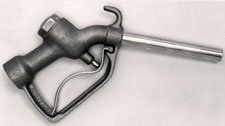Lineman Admitted To Not Following Proper Procedures
A lineman's confusion appears to have been behind the January
2009 emergency landing of a Cessna 421C Golden Eagle in Wichita,
KS, according to the National Transportation Safety Board's factual
report on the mishap.

According to the report, the piston-engined twin (similar to
type shown above) departed Wichita's Colonel James Jabara Airport
(AAO) shortly after 8:00 am local time January 30, bound for
Millard Airport (MLE) west of Omaha, NE. It didn't take very long
for problems to arise.
"During takeoff, the pilot noted 2,800 rpm, 39 inches of
manifold pressure, and all engine instruments were 'in the green,'"
the report states. "While climbing to 3,000 feet mean sea level,
the airplane's engines began to lose power. The pilot noted
propeller rpms were still 2,800 but felt as though no "power" was
being produced by the engines; the pilot coordinated for an
emergency return. While attempting to troubleshoot the malfunction,
the pilot assessed that he could not return to the airport and
elected to perform a forced landing."
The aircraft landed gear-up in a field. The pilot and his two
passengers suffered minor injuries, but came through the scrap
relatively OK. Investigators arrived on-scene soon after... and it
didn't take them long to find a problem.
"An examination of the airplane revealed that the fuel tanks
contained what appeared to be a mixture of 100 low-lead (100LL) and
Jet-A fuel," the NTSB says.
When questioned by FAA inspectors, a lineman at AAO admitted he
topped off the Cessna 421 with 80 gallons of Jet-A, not 100LL. He
then offered an interesting explanation.
 Two Piper PA-46 turboprop conversions were also based at AAO at
the time of the incident. Those aircraft are not required under the
JetProp STC to have modified fuel filler ports, those with larger
openings to accommodate flattened Jet-A fuel nozzles; an adapter is
used to move fuel into the narrower Malibu-spec opening.
Two Piper PA-46 turboprop conversions were also based at AAO at
the time of the incident. Those aircraft are not required under the
JetProp STC to have modified fuel filler ports, those with larger
openings to accommodate flattened Jet-A fuel nozzles; an adapter is
used to move fuel into the narrower Malibu-spec opening.
However, the lineman told investigators FBO personnel had
discovered a work-around: by rotating the nozzle, and dispensing
fuel at reduced pressure, one can leave the adapter in the truck.
"This method became the normal way for the accident line person to
refuel the two converted PA-46 airplanes," the NTSB states, "so the
line person reported that he incorrectly thought the accident
airplane required Jet-A fuel despite having refueled the accident
airplane several times previously."
The NTSB notes the 421 had narrow fueling ports required by an
airworthiness directive, specifically intended to prevent the kind
of error the lineman admitted to. The Cessna 421's basic fuselage
is shared with the turboprop-engined Cessna 425 Conquest I; several
421s have also been converted to turboprops.
The report notes the pilot conducted a "normal" pre-flight
inspection ahead of the accident flight. He had asked the FBO to
top off the tanks upon landing at AAO the night before.
 ANN's Daily Aero-Term (04.28.24): Airport Marking Aids
ANN's Daily Aero-Term (04.28.24): Airport Marking Aids Aero-News: Quote of the Day (04.28.24)
Aero-News: Quote of the Day (04.28.24) ANN's Daily Aero-Linx (04.28.24)
ANN's Daily Aero-Linx (04.28.24) Aero-News: Quote of the Day (04.29.24)
Aero-News: Quote of the Day (04.29.24) ANN's Daily Aero-Linx (04.29.24)
ANN's Daily Aero-Linx (04.29.24)




